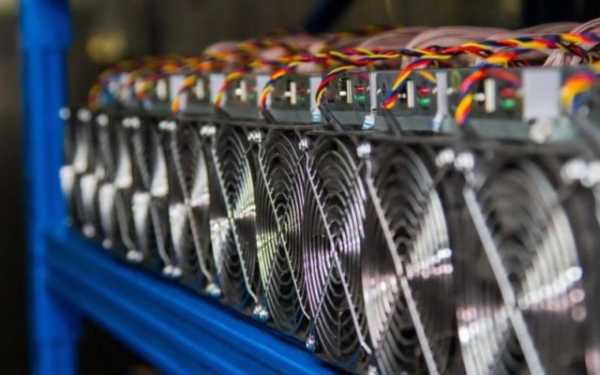What's Holding Back Bitcoin's Growth

Bitcoin has been trading above $100,000 for more than 40 days in a row, but remains in a sideways trend between $100,000 and $110,000. This is happening despite the growing inflow of funds into spot ETFs, an increase in the capitalization of stablecoins and positive news about the regulation of cryptocurrencies in the United States, writes RBC Crypto.
This raises the question: who is selling Bitcoin at these levels and holding back growth despite strong demand from funds?
According to Alexander Bloom, managing partner of investment firm Two Prime, Bitcoin is currently in a transition phase from speculative participants to long-term investors.
“With geopolitical instability, it makes sense that speculators and leveraged traders are exiting positions, while new long-term investors are using the dips to enter the market,” Bloom told CoinDesk. “We seem to be at a balance point between these two groups.”
According to Glassnode, the bulk of the profits recorded in the Bitcoin market in recent days have come from investors who have held coins for less than a year. On Monday, such wallets accounted for 83% of the total realized profits. Of these, addresses with a storage history of six to 12 months alone brought in $904 million, the second-highest figure since the start of the year.
The short-term holding activity has picked up after even more profit-taking by long-term investors in May and early June. Last week, Glassnode estimates that wallets that had held bitcoin for more than 12 months withdrew $1.2 billion in profits, the most since the start of the year. Seven days later, that figure had shrunk to $324 million.
“Long-term investors continue to sell amid robust ETF demand, essentially absorbing the inflows and keeping the price in a range,” 10x Research founder Markus Thielen said in a note to clients. “This balance reduces volatility, but a breakout will occur sooner or later.”
Miners are also selling bitcoin
According to IntoTheBlock, miners continue to bring coins to market. Since the end of May, their combined balances have decreased from about 1.94 million to 1.91 million BTC, which is equivalent to selling about 30,000 bitcoins in 20 days.
“Miners are forced to sell regularly. And surprisingly, some long-term holders are also gradually moving into fiat to manage their dollar liabilities,” Philippe Beccazi, CEO of crypto platform XBTO, told CoinDesk. “The key factor is volume. It’s important whether the trades are happening at high volumes — they can turn around quickly, as they have a lot of speculative capital.”
At the same time, the share of miners in the total trading volume on the spot market remains extremely low and in June reached its minimum since 2022.
Accumulation has slowed down
Investors large and small alike were actively adding to their positions during Bitcoin's spring rally from $75,000, but after breaking through $100,000, the trend has weakened significantly.
“Once Bitcoin crossed $100,000, accumulation patterns began to weaken,” Jarvis Labs founder Benjamin Lilly told CoinDesk. He believes the slowdown was partly due to the growing appeal of alternative strategies. With funding rates skyrocketing, delta-neutral positions began to yield 15-30% per annum, which could prompt investors to cut back on Bitcoin purchases and switch to less risky ways to make money.
Delta-neutral positions are generally understood to be strategies in which an investor simultaneously opens long and short positions on the same asset to earn not on the rise or fall of the price, but on the difference in profitability. For example, you can buy bitcoin on the spot market and sell it on the futures market with a contract with a high funding rate. As long as this rate remains positive, the trader receives income with virtually no risk of changes in the price of the asset itself.
Orbit Markets co-founder Jimmy Yang told CoinDesk that as Bitcoin matures and becomes a more stable asset, investors' expectations are changing – they are no longer counting on multiple growth in a short period of time. This, according to him, is prompting some holders to reorient some of their capital to other assets.
“While Bitcoin still has potential to grow, investors are no longer expecting 10x or 100x returns in the short term. So we are seeing some long-term holders reducing their BTC positions to diversify their portfolios into stocks, gold, and private placements. From an asset management perspective, this makes sense,” Yang said.
What's next?
According to Yang, it is unlikely that the market will see any significant movements in the near future: Bitcoin continues to follow stock indices and the general investor sentiment towards risky assets.
“Both asset classes are trading near all-time highs. If the stock market goes up, Bitcoin will likely follow. But as we enter the summer lull, activity will likely remain subdued,” Young told CoinDesk.
Alexander Bloom of Two Prime reminded that since the beginning of the quarter, Bitcoin has grown from $78,000 to more than $100,000, and now the market may cool down a bit.
“Bitcoin has gained in a short time, so a correction would be logical. At the same time, the current drawdowns remain shallow and this indicates the strength of the market before a possible new stage of growth,” he said.
According to Markus Thielen of 10x Research, the important technical levels now are $102,000 as support and $106,000 as immediate resistance.
Источник: cryptocurrency.tech



